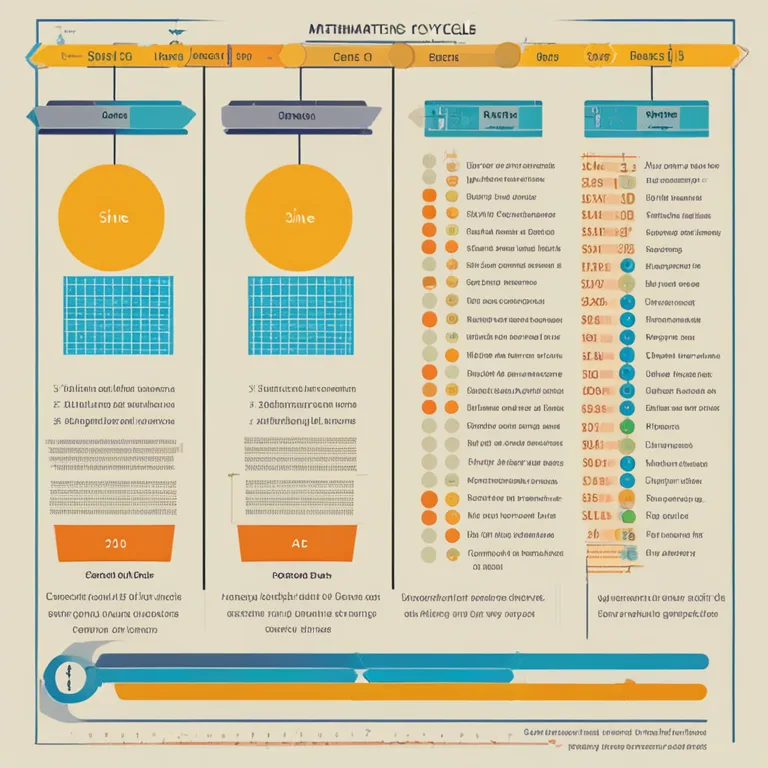
Calculating The Biorhythms: A Step-by-Step Guide
Discover the science of biorhythms and learn how to calculate your personal cycles to better understand your physical, emotional, and intellectual rhythms.
article by Adrian Wallace
Introduction to Biorhythms
Biorhythms are believed to be natural cycles that regulate various aspects of human life. This intriguing concept suggests that our daily lives are influenced by rhythmic biological cycles. The idea, which has its roots in the early 20th century, has endured thanks to both proponents of alternative wellness and individuals curious about the intersections between body and time. In this article, we’ll delve into the specifics of calculating these cycles and how they are thought to impact our physical, emotional, and intellectual well-being.

The Three Primary Biorhythms
There are three primary biorhythms: the physical, emotional, and intellectual cycles, each governed by its own time frame. The physical cycle, with a 23-day period, modulates vitality and strength. The emotional cycle lasts 28 days and influences creativity, mood, and perception. The intellectual cycle, spanning 33 days, affects analytical thinking and cognition. To calculate your biorhythms accurately, it’s essential to understand the starting point, which is typically your birth date.

Starting Point: Date of Birth
The calculations begin with your birth date. This moment in time marks the synchronization point for your biorhythms, setting all of them to a 'high' starting position. From there, the cycles wane to low points and cycle back again. The first step in calculating your biorhythms is establishing the number of days that have elapsed since your birth.

Mathematics Behind the Cycles
Once you have determined the number of days lived, you calculate each cycle's state by applying sine functions that represent the wave-like nature of biorhythms. For the physical cycle, take the number of days since birth and divide by 23, for the emotional cycle divide by 28, and for the intellectual cycle, divide by 33. The remainder of each division is then used to find the angle (in degrees) that corresponds to each cycle’s sine wave position.

Interpreting the Sine Waves
After calculating the angles, a mathematical sine function is used to find the value of each cycle for the current day, with the results ranging between +1 and -1. A positive sine value indicates a 'high' phase of the cycle, while a negative sine value points to a 'low' phase. The closer the value is to +1 or -1, the stronger the influence of that cycle on your day.
Software and Online Calculators
Given the complexity of these calculations, many rely on software or online biorhythm calculators. Modern tools take into account leap years and other calendric variations to ensure precision. Such technology simplifies the process by automating calculations, leading to personalized biorhythm charts that visually represent your cycles.
The Influence of Biorhythms
Proponents of biorhythms suggest that by tracking these cycles, individuals can make informed decisions about their activities. For example, choosing to negotiate a contract or engage in demanding physical activities when one's relevant cycles are at a peak. Critics, however, argue that scientific evidence for biorhythms is lacking, and that life’s complexity cannot be boiled down to simple cycles. Regardless, many find personal value in monitoring their biorhythms as a form of self-reflection and awareness.
Published: 1/4/2024
Modified: 1/4/2024
More predictions
Come back here soon to learn more about yourself and your future


Unlocking The Accuracy of Biorhythms
Delve into the realm of biorhythms to discover their reliability and impact on daily life in this insightful article.


The Accuracy of Biorhythms: Fact or Fiction?
Examine the validity of biorhythms in predicting personal vitality and life cycles in this in-depth analysis.


The Practical Uses of Biorhythms in Daily Life
Discover the practical applications of biorhythms across various aspects of daily living, from personal health to decision-making.